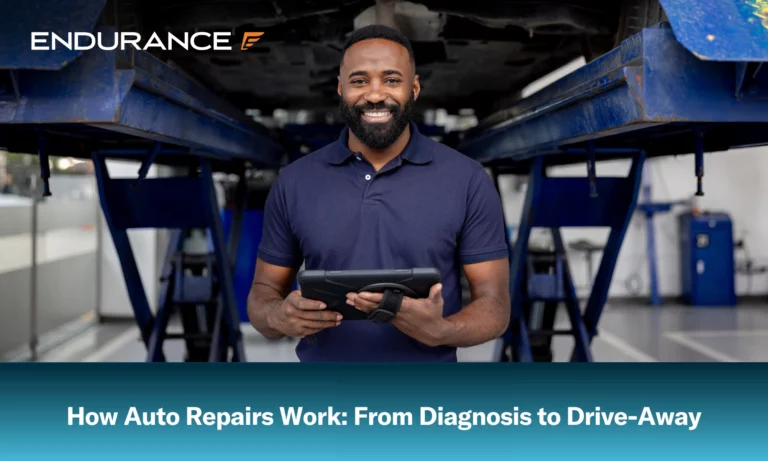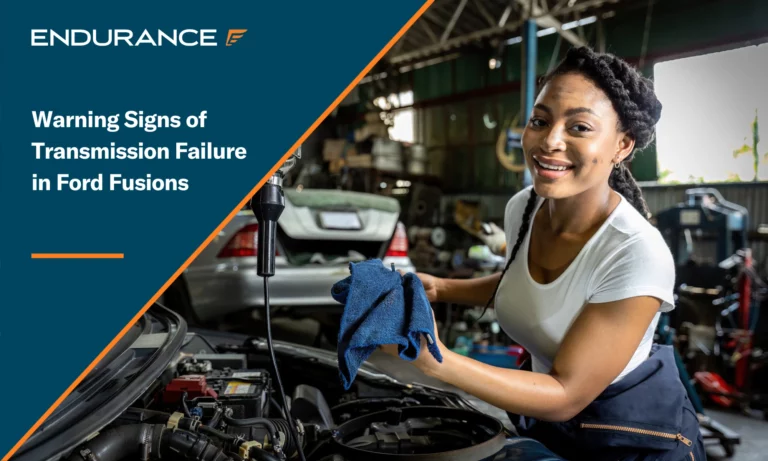Why is My Car Stalling?

Heading out on a road trip is meant to be a fun and carefree experience filled with friends, family and new memories. But sometimes car problems get in the way of a smooth journey. For example, extreme temperatures and extended driving can bring on mechanical troubles, like your car engine stalling, which may not happen during normal use. And if you’re a newer driver or have never dealt with this issue before, you may not know what to do when your car stalls.
That’s why understanding some of the causes of stalling and the steps you should take if it happens to your vehicle can help you stay prepared no matter where you are.
What is “Stalling?”
To sum it up, “stalling” simply refers to when a vehicle’s engine unexpectedly shuts off when in use. This can be anywhere from a few seconds to an immobilized car stuck on the side of the road that requires service to get back on the road. However, if your car stalls and you can get it running again quickly, you shouldn’t ignore the problem as it can be caused by several factors throughout some of your vehicle’s vital systems.
What Causes Stalling?
Modern automobiles are complex machines, which means there are plenty of ways something can go wrong. However, when it comes to a car stalling, it can be caused by troubles in any of a vehicle’s many systems, though there are more common reasons than others. For most vehicles, some of the most common causes of stalling can include:
Fuel Issues
A gas or Diesel engine needs a steady fuel supply to operate properly. Without a fully working fuel system, you may notice:
- Engine sputtering
- Fluctuating power (highs and lows)
- Poor fuel economy
- Difficulty starting the vehicle
If your vehicle is stalling, the first thing to check is that there’s enough fuel in the tank (fuel gauges do go bad). Cheap fuel (which may contain impurities) is another culprit, along with a faulty or clogged fuel filter or even something like dirty or defective spark plugs.
But things can get more complex if the vehicle stalls due to a bad fuel pump, which can cause a whining noise from the gas tank. If that’s the case, you could be looking at some costly repairs, with the experts at RepairPal estimating that it can cost you anywhere from $851 to $1,009 to repair. Low fuel pressure is another potential issue, with causes ranging from a blocked fuel supply line to something as simple as a failing computerized component.
Electric Problems
The electrical system is another essential component of any vehicle, as it helps it start and stay powered. However, if your car is stalling and you think it may be your car’s electrical system, be on the alert for:
- Hard starts
- Burning smells
- Blown-out fuses
- Malfunctioning lights (inside or out)
Most electrical troubles center on the battery, which has a lifespan ranging anywhere from one to five years. So if you can’t remember when the battery was last replaced, start here. It can be easily and quickly tested at an auto repair shop and some auto supply stores. Or, if you have the Advantage protection plan from Endurance, you can save on your car’s next battery replacement, along with other special, one-time services. You’ll even enjoy $3,500 in yearly maintenance services on top of the special savings, including oil and filter changes, alignment checks, engine diagnostic exams and more.
Overall though, while the battery helps with car starting, the alternator charges the battery and powers the other electrical components while the car runs. You can often trace a weak battery to a bad alternator, which is not a cheap repair, averaging anywhere from $583 to $777.
Transmission Troubles
Car stalling doesn’t just result from engine-related issues; the transmission, whether it be a manual or an automatic transmission, can be another factor and can include:
- Acceleration loss
- Gear slippage or failure
- Soft clutch pedal (manual transmission)
- Transmission overheating
Transmission-related car stalling can come from a bad torque converter, which, in simple terms, transfers engine power to the driveshaft. The problem may stem from degraded transmission fluid, which, like the other essential fluids in your vehicle, should be regularly changed at the intervals laid out in your owner’s manual. The converter itself can often be the cause. And as you can guess, transmission work is one of the priciest you can face, with a full replacement costing owners a whopping $5,056 to $5,255!
A bad clutch throwout or pilot bearing can tax the engine in manual transmissions and lead to stalling. In addition to a spongy pedal, you may hear a whining noise when engaging the pedal.
Cooling System Issues
While a cooling system is important year-round, it’s extra crucial during high-temperature months. Warning signs include:
- Check-engine light illuminating
- Low coolant level
- Engine overheating
- Non-starting engine
The coolant system deserves extra attention on long summer trips because an overheated engine can lead to catastrophic damage and costly repairs. Always begin a journey with a fluid check, including coolant. Low coolant can mean it’s just time to top-off things, or there’s a leak (look for a puddle under the car).
Components within the cooling system can also be the issue. A new water pump, for example, typically runs from $682 to $824. A faulty coolant temperature sensor can also be the culprit, costing up to $431 to replace.
Faulty Timing Belt
A timing belt helps keep the various valves inside your engine moving safely by synchronizing the camshaft and crankshaft. Some vehicles rely on timing chains, which don’t generally require replacement. But many cars use a rubberized timing belt, which like other wear and tear components, will need to be replaced at some point. But, should your car’s timing belt fail, you could do some serious damage to your engine. Some potential signs of a faulty timing belt can include:
- Engine ticking noise
- Non-starting/hard-starting engine
- Engine misfires
- Power loss
Timing belt replacement costs can vary significantly and mostly depend on the amount of labor involved. For instance, a new timing belt for a Ford Escape can range from $821 to $989.
Dirty Air Filter
While a complicated mechanical issue can cause stalling, sometimes it’s due to a simple problem like inadequate airflow caused by a dirty air filter. Be on the lookout for:
- Engine misfires
- Reduced fuel economy
- Power loss
- Noticeable fuel smell
The good news is that replacing or cleaning an air filter can be done at home, though you should always check your owner’s manual for specifics before starting. It’s also a good idea to protect yourself and your vehicle from unexpected and costly repairs that can cause your car to stall.
With an Endurance auto protection plan, you can rest easy knowing you won’t have to pay out-of-pocket for repairs for your car’s vital components, like the engine, transmission and more. You’ll even be able to get help any time your car stalls or experiences issues with your complimentary 24/7 roadside assistance and towing. Plus, as an Endurance customer, you’ll be able to take your car to any ASE Certified mechanic, certified automotive repair shop, or even your car’s dealership for repairs—so no matter where you are, Endurance has you covered. And if your repairs take longer than expected, especially if you’re in the middle of a road trip, don’t worry, as you’ll have other great perks like trip interruption coverage and rental car reimbursements to help you get back on the road fast.
What Happens If I Stall While Driving?
Despite being aware of what can go wrong, sometimes stalling and a road trip breakdown can’t be prevented. Knowing what to do if this happens can help you avoid further damage while keeping you and other cars on the road safe.
- Stay Calm: The loss of engine power is unsettling at best. Keep focused on the task at hand (driving) and quickly check out your surroundings (like highway traffic).
- Turn on Hazard Lights: Quickly engage the hazard lights to alert fellow motorists that your car is having problems.
- Steer to a Safe Spot: If you are able, pull over to a highway emergency lane, but note that a stalled engine means a loss of power, so you’ll have no power steering. This means that steering your vehicle the car will require extra effort, so be prepared. If there is no emergency lane, pull over as far as possible to the side of the road.
- Apply Extra Pressure To The Brakes: Like not having power steering, power brakes will be out, too, so stopping will need additional effort. You can also try pumping the brake pedal in this scenario or using your emergency brake pedal or lever.
- Assess the Situation: Once you are stopped, determine if there are any signs about why your car has stalled. Is the engine temperature high? Are there any usual smells or sounds? Did you hear anything unusual before stalling? Knowing the details may assist in getting you back on the road. However, if you can, do this step inside the vehicle to help keep you safe.
- Restart the Car: After a few minutes, try restarting the car. If it starts and you can, look to drive to a safer location. However, be sure to keep your hazards on and to give yourself space between the other vehicles on the road, should you end up stalling again.
- Contact Roadside Support: Even if you can restart your car and pull over to somewhere safer, you may not be able to keep your engine running long enough to make it to a repair shop. But, when you’re an Endurance customer, you can access 24/7 roadside assistance and towing services with a phone call or a push of a button using the Endurance Mobile app. Then, sit back while we take your vehicle to the nearest repair shop to you while working directly with them to get you’re car back up and running.
- Stay Safe: While waiting for assistance, avoid leaving the car unless there’s a fire or other danger. The Insurance Information Institute recommends everyone remain inside a vehicle that’s disabled on a busy roadway. If you exit the vehicle, such as to set up flares or warning triangles using your car’s emergency kit, keep a safe distance from the car and traffic.
Keep Your Car Running with Endurance
A stalling car can be stressful to deal with, especially when you’re facing some potentially expensive repairs. But, when you have an Endurance auto protection plan, you can get the peace of mind you need when it comes to your car, truck or SUV.
With Endurance, you’ll have coverage for your vehicle’s most vital components, helping you save when it comes to unexpected breakdowns and repairs, like your car stalling. You’ll even be able to enjoy perks like around-the-clock roadside assistance (with towing), trip interruption coverage and rental car reimbursements to go along with being able to take your car to any certified mechanic or shop of your choice including your dealership. But that’s not all, as regardless of the Endurance plan you choose, you’ll also be eligible for a full year of Endurance Elite Benefits, including tire repairs or replacements, collision discounts and other perks and savings.
To get your vehicle road trip ready with the help of an Endurance auto protection plan, request your free, no-obligation quote. Or, to learn more about how Endurance can help you, give a member of the award-winning Endurance customer care team a call at (800) 253-8203. And don’t forget to visit the Endurance blog, where you’ll find even more articles on topics ranging from DIY car care tips, vehicle buying guides, extended warranty coverage comparisons and much more.













Since the age of 16, Keith has been immersed in the automotive industry, beginning his career by helping his dad fix vehicles at a young age. Keith now owns his own family-run, ASE Certified repair shop, A+ Autocare. At his shop, he focuses on building trusting relationships with his community through exceptional customer service. Read more about Keith.